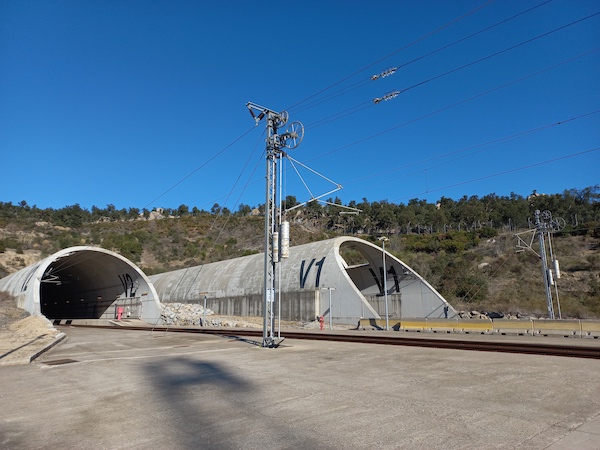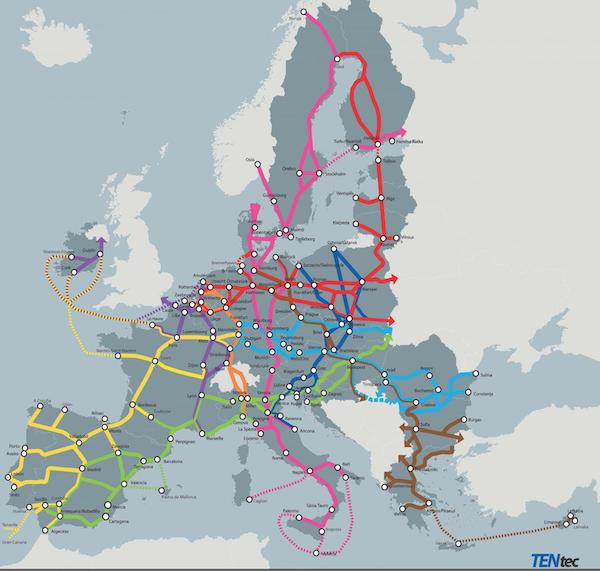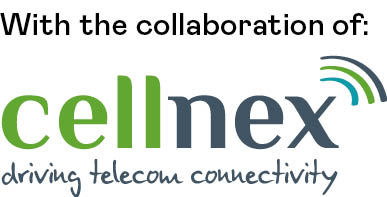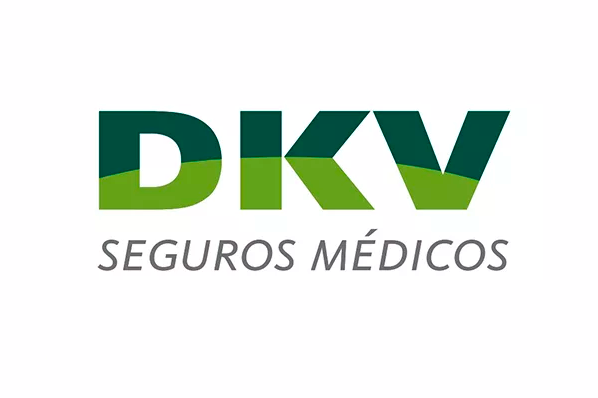Digital transformation is the key to the sustainable, connected and collaborative mobility of the future

To help the sector meet its environmental impact and safety objectives, we must accelerate the deployment of telecommunications infrastructure: communication solutions and networks capable of maximising synergies among roads, railways and telecommunications operators, thereby facilitating operations and competitiveness while also reducing accident rates.
Continuous communications coverage (especially in 5G) plus real-time data capture elements will enable mobility managers to improve their decision-making in real time, thereby adapting roads to the needs of each moment, increasing road safety by reducing the number of accidents (in accordance with the goal of zero traffic-related deaths by 2050), improving fluidity, reducing travel times (leading to economic impacts at the personal and organisational levels) and adapting infrastructure investments to real optimised needs. All of these benefits can be enhanced through the addition of information about the vehicles using the infrastructure.
Today’s cars generate about 2 TB of data for every hour of operation. Much of this information is used internally to control the vehicle’s subsystems. Self-driving cars generate around 5 TB of data per hour, as they must analyse information that would otherwise be processed by the driver (intelligent analysis of the images captured by video cameras and lasers, which stand in for the driver’s vision). This is what allows the vehicle to make decisions on the road. In other words, vehicles are increasingly becoming batteries with processing capacity that get around on wheels. This increase in processing requirements leads to higher energy consumption.
“Communication and distributed computing infrastructure must be accessible and shared by the various elements involved in the new mobility ecosystem”
Responsibility for the vehicle’s movements is therefore shifting from the driver to the manufacturer-installed decision-making algorithms, which must ensure that the movements are safe and do not cause problems for other vehicles. Therefore, to ensure the safety of all movements, it is essential that self-driving/connected vehicles communicate and coordinate with all other vehicles on the road, as well as with the analytical context information provided by the infrastructure to achieve safe, collaborative and sustainable mobility.
Under these circumstances, a key factor in the transformation process is to have good communications to ensure the operation of vehicles and to help them process their own information as well as information about their surroundings. But is that enough? Communication and distributed computing infrastructure must be accessible and shared by the various elements involved in the new mobility ecosystem to facilitate the creation of new models and immediate local data sharing (low latency). In other words, the infrastructure needs to facilitate the process of digitalising mobility and generate benefits for the various parties involved, as is currently happening in industrial environments.

Cross-border infraestructure
As coordinators of the H2020 5GMED project at the Cellnex Mobility Lab in Castellolí (Barcelona), we are working to develop multi-technology infrastructure with distributed computing capabilities, with the aim of enhancing the user experience, improving mobility operations and contributing to the creation of new services.
This infrastructure will be more sustainable in terms of energy and capable of providing continuous 5G connectivity to meet future needs in terms of passengers/freight, safety, operational efficiency, accident prevention and environmental impact. This initial step will be followed by cross-border deployments thanks to projects awarded by the European Commission along the France-Spain-Portugal transport corridors (Atlantic and Mediterranean) as part of the European CEF2 Digital programme, which will undoubtedly help to accelerate the digital transformation and technological advancement of mobility in Europe
This is a major challenge that, for the time being, is focused on the corridors of the 26,000-kilometre Trans-European Transport Network (TEN-T), which connects cities, ports, airports and logistics hubs and in the coming years will reach cities that make up a large portion of the movement of people and goods in Europe, where vehicles have a greater impact on the environment, accidents and society, and where new models of shared, personal and autonomous mobility may be even more necessary.
“In the coming years, data-driven driving will facilitate the shift from private vehicles to shared, collaborative and autonomous mobility solutions”
Under the H2020 PODIUM project, for which Cellnex is coordinating pilot projects in cities/corridors in Germany, Italy and Spain, work has begun on collaborative and connected mobility in cities that allow the coexistence of connected and self-driving vehicles. As a result, traffic in these cities has started to improve.
In the coming years, data-driven driving will facilitate the shift from private vehicles to shared, collaborative and autonomous mobility solutions. As part of a study we are conducting with Abertis under the umbrella of CEF2 Digital (EUMOB project), we are analysing what services and business models could be developed from the data generated by vehicles and infrastructure.
All of these actions will help to accelerate the digitalisation of mobility and push forward the technology (C-V2X, FRMCS, 6G, Edge, etc.). With a presence in 12 European countries, Cellnex can play a key role in this process by undertaking cross-border deployment projects along the main TEN-T corridors as well as in cities.
Raül Gonzàlez Prats
Senior Product Manager for Collaborative Projects at Cellnex


































